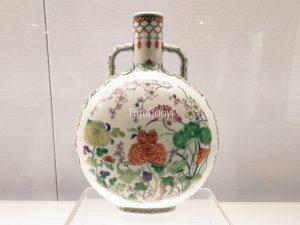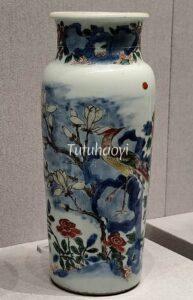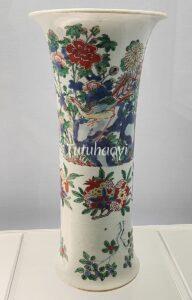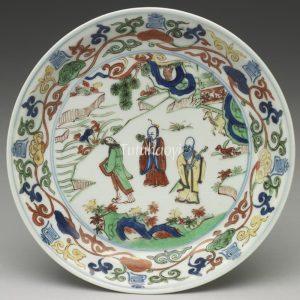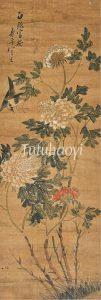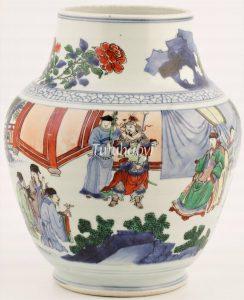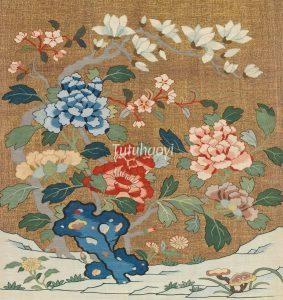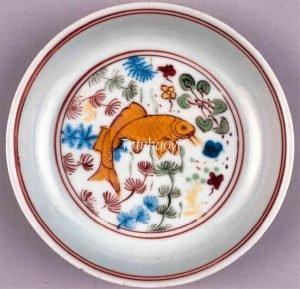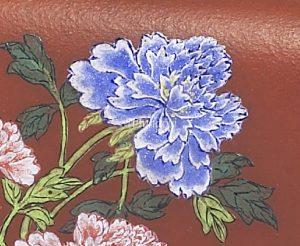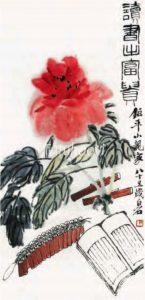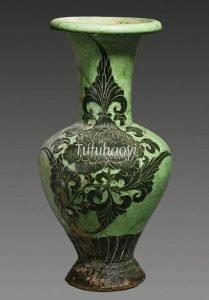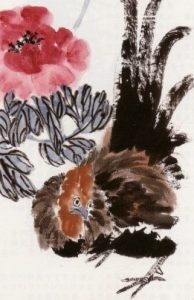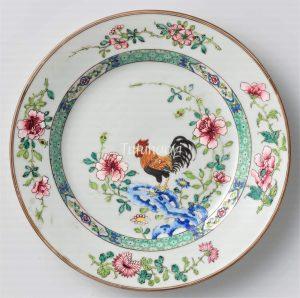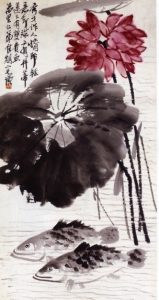Showing Results Containing
When you mistake a motif in a traditional Chinese picture, you could have misinterpreted the meaning of the whole image intended by the ancient craftsman. Dr Yibin Ni has used the following example to illustrate the hidden meaning of a series of i...
It is widely thought that the two-horned peony is a characteristic and unique feature only existed in Kangxi period. But Dr Yibin Ni has proved otherwise here with a number of examples from other reigns on Chinese antiques.
‘Fu Gui Bai Tou 富贵白头’ is interchangeable with ‘Bai Tou Fu Gui 白头富贵’, with the same meaning of ‘May you enjoy wealth and high position ...
The figures of Three Star Gods are personified representation of Good Fortune, Prosperity, and
Pun Design:
Chinese bulbul + Peony
Punning Details:
– ‘bai tou 白头 white-headed’, of ‘bai tou weng 白头...
Fish (鱼 yu) puns with the word yu 余 meaning ‘abundance’, therefore it symbolises wealth and prosperity. Continue Reading
The story scene is originated from an anecdote dating back to the Tang dynasty (618-907). Cui Rong (崔戎, 780-835) is a statesman who is important enough to have a position in the ‘Biographies’ section in the official histories The Old Book of Tang (jiu tang shu 旧唐书), completed in 945, and the New Book of Tang (
The character ‘yu 玉’ in ‘yulan hua 玉兰花’ for ‘magnolia’ is the same ‘yu 玉’ for ‘jade’. The word ‘tang 棠’ from ‘haitang hua 海棠花’ for ‘crabapple’ is homophonic with the word ‘tang 堂’ for ‘house’. The combination of the two characters ‘yutang 玉堂’ means ‘jade hous...
This pun rebus picture consists of four essential pictorial elements: bird,
Pun Design: Apples + Continue Reading
A fish is an ancient symbol of material prosperity and fertility in China, both because it puns with another word yu 余 meaning ‘abundance’, and because of the...
Gourd (葫芦 hu lu) in Chinese is pronounced similar to ‘fu (福, fortune)’ and ‘lu (禄, wealth)’, therefore its image is often used as a pun picture referring fortune ...
Common sources such as Baidu refer to the motif of a peony flower head with two distinctive ‘horns’ as a characteristic feature unique to Chinese porcelain of the Kangxi ...
Pun Design:
Persimmon + Chicken/ rooster/ cockerel
Punning Details:
– ‘shi 柿’ in ‘shi zi 柿子 persimmon’ is a pun on ‘shi 市 business’
– ‘大鸡 da ji’ for ‘large Continue Reading
Goldfish is often found as a decorative motif in Chinese art. According to Chinese tradition, keeping goldfish in the house is considered auspicious, since the name for ‘goldfish’ (jin yu 金鱼) puns on the Chinese words for ‘gold 金 jin’ and ‘jade 玉 yu’ as well as the phrase ‘abundance of gold’, t...
Book is a symbol of education or examinations.
Peony is a symbol of wealth and prestige.
The motif combination of book and peony sends a ...
The peony is traditionally considered the most prestigious flower in China. It is symbolic for power, royalty, wealth, and high rank. The ancient town Luoyang 洛阳 was famous for rare and beautiful varieties of peonies. The nickname of peony in Chinese is called ‘fu gui hua 富贵花’, literally meaning the flower of we...
‘Fu gui 富贵’ in ‘fu gui hua 富贵花’, literally, the ‘flower of wealth and prestige’, which is a nickname in Chinese for ‘peony’, contributes to ‘wealth and privilege’ in the saying. ‘Ji 鸡’ is a pun on ‘qi 期’, which means ‘can be expected’.
The same design may be also referred to as...
The Chinese phrase ‘Gong ming 功名’ for ‘scholarly honour or official rank’ is a pun on two Chinese characters ‘gong 公’ and ‘ming 鸣’.
‘Gong 公’ from ‘gong ji 公鸡’, the Chinese name for ‘rooster’, makes pun on the Chinese word ‘gong 功’; and ‘ming 鸣’, which ...
‘Bing di 并蒂’ from ‘bing di lian 并蒂莲’ (twin-headed lotus flower) contributes to the meaning of ‘a loving relationship’. ‘Gui 鳜’ from ‘gui yu 鳜鱼’...

